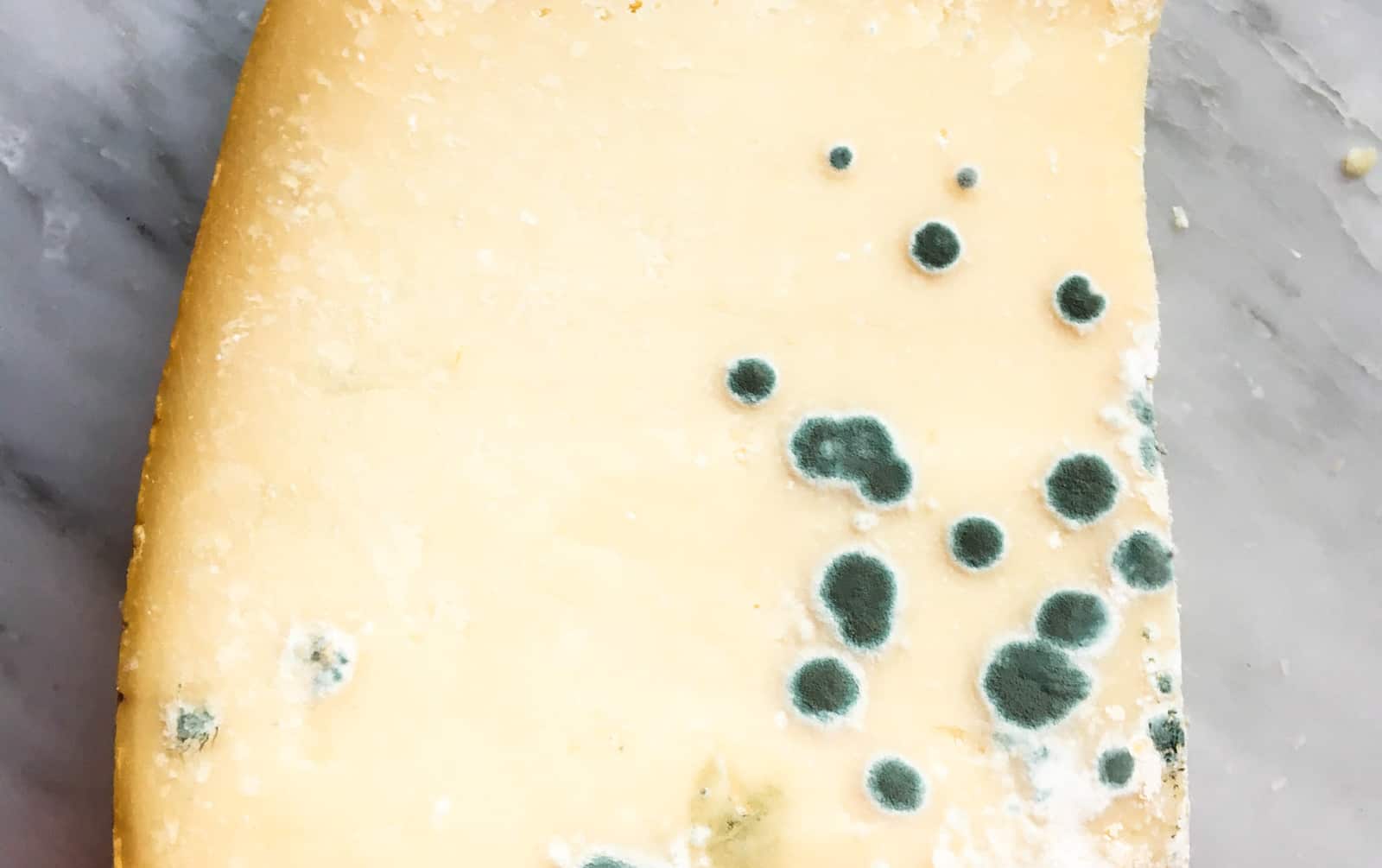
Is the mold growing on my cheese dangerous?
It’s not uncommon to open a piece of cheese in your fridge and find a bit of white or blue mold growing on the surface. Your first reaction might be to throw the whole thing away, but you don’t have to. They’re harmless, and a very common occurrence.
Most of the time, these molds and microbes are crossed over from a different cheese at the cheese shop, or perhaps there are caused by yeasts that were already living in your fridge (vegetable skins are especially full of microbes).
These bacteria have a harder time growing on heavily processed foods, so mold is actually a sign that you have a quality product. They can’t grow without oxygen, so they’ll only be on the surface of your cheese. If they bother you, just take a knife and scrape them off, but you can also just eat them.
Cheese is a very durable product, and if you’re really not sure, you can always trust your nose. However, if that cheese smells bitter, like ammonia, or has a chemically aroma, then it may have very have expired and it’s best to throw it out.
Special thanks to cheesemonger Yahn Van de Walle of Eataly in Chicago for letting us share his expertise! Got an inquiry? Tweet at us with #AskCultureCheese, and we’ll get you an answer!




